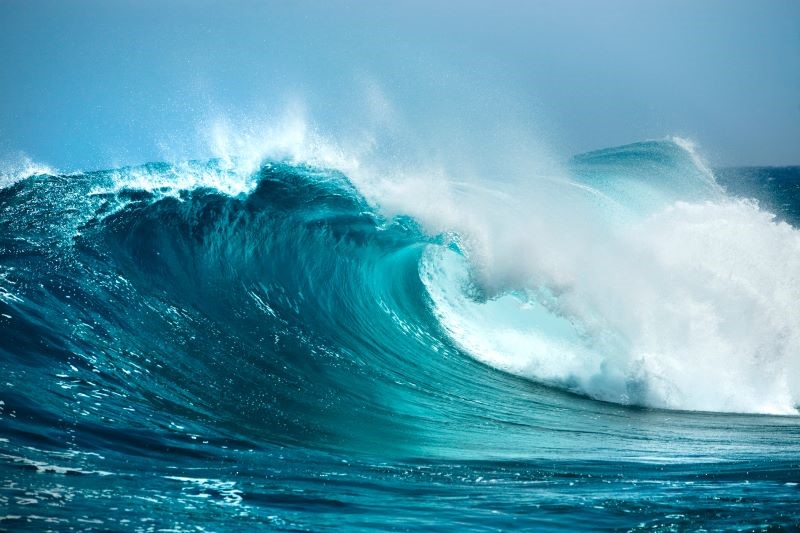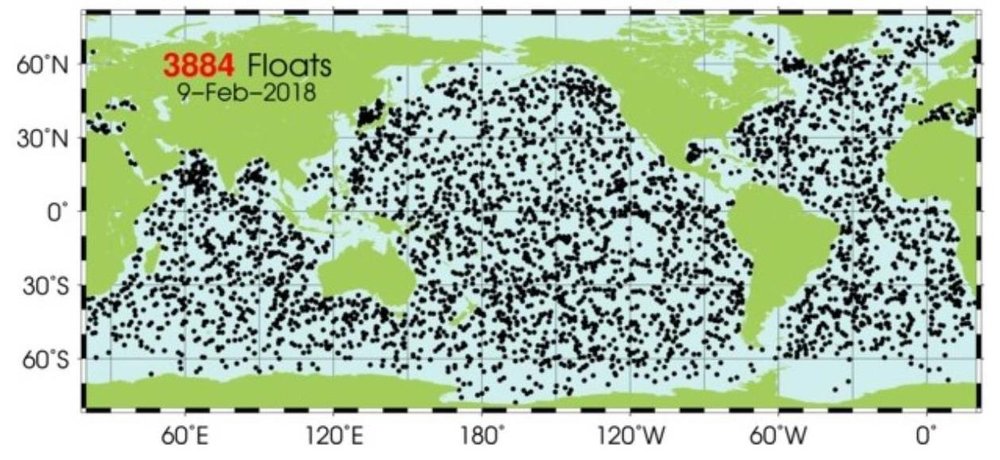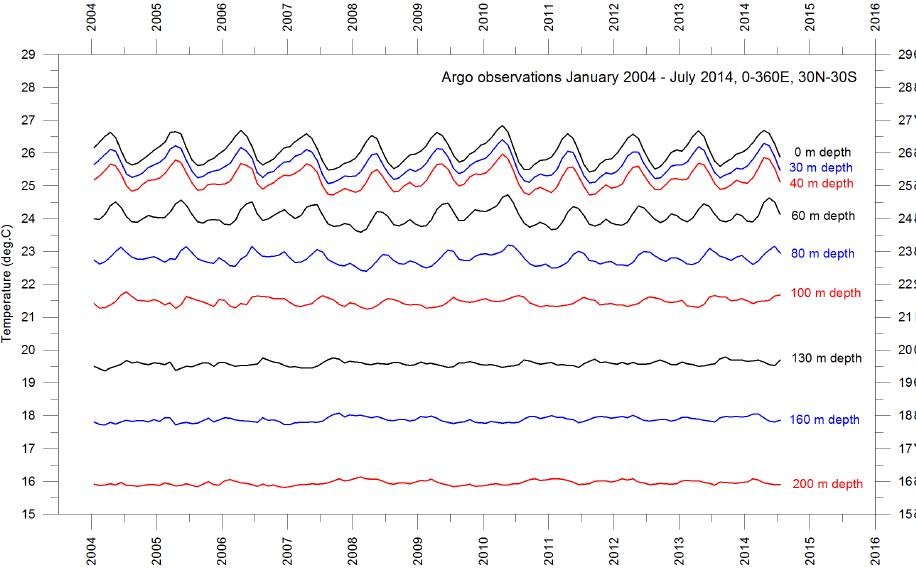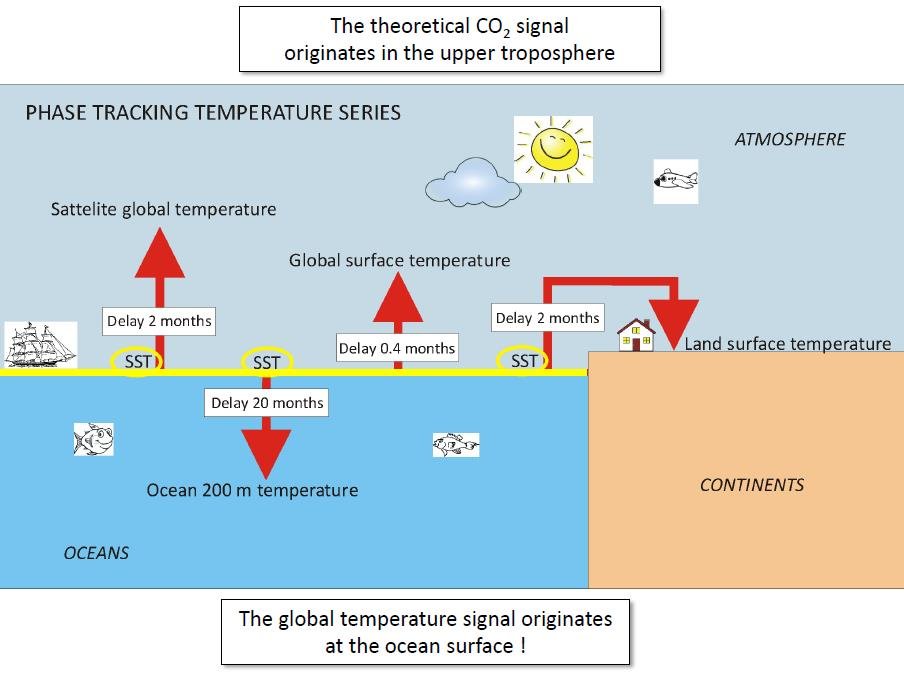“If it [a scientific hypothesis] disagrees with experiment, it’s WRONG.” – Nobel Prize winner Richard Feynman

According to the climate change narrative, modern global warming is largely the result of human emissions of CO2 into the atmosphere. But a recent lecture questioned that assertion with an important observation suggesting that ocean surface temperatures, not CO2, are the planet’s climate control knob.
The lecture was delivered by Norwegian Ole Humlum, who was formerly a full professor in physical geography at both the University Centre in Svalbard, Norway and the University of Oslo, in addition to holding visiting positions in Scotland and the Faroe Islands. He currently publishes regular updates on the state of the global climate.
In his lecture, Humlum dwelt on temperature measurements of the world’s oceans. Since 2004, ocean temperatures have been studied in detail at depths of up to 2 km (1.2 miles), by means of a global array of almost 3,900 Argo profiling floats. These free-drifting robotic floats patrol the oceans, taking a deep dive every 10 days to probe the temperature and salinity of the watery depths, and transmitting the data to a satellite within hours of reaching the surface again. A 2018 map of the Argo array is shown below.

The next figure illustrates how the oceans have warmed during the period that the floats have been in operation, up to August 2020. The vertical scale is the global ocean temperature change in degrees Celsius averaged from 65oS to 65oN (excluding the polar regions), while the horizontal scale gives the depth up to 1,900 meters (6,200 feet).

You can see that warming has been most prominent at the surface, where the average sea surface temperature has gone up since 2004 by about 0.27 degrees Celsius (0.49 degrees Fahrenheit). The temperature increase deep down is an order of magnitude smaller. Most of the temperature rise at shallow depths comes from the tropics (30oS to 30oN) and the Antarctic (65oS to 55oS), although the Arctic (55oN to 65oN) measurements reveal considerable cooling down to about 1,400 meters (4,600 feet) in that region.
But Humlum’s most profound observation is of the timeline for Argo temperature measurements as a function of depth. These are depicted in the following figure showing global depth profiles for the tropical oceans in degrees Celsius, from 2004 to 2014. The tropics cover almost 40% of the earth’s surface; the oceans in total cover 71%.

The fluctuations in each Argo depth profile arise from seasonal variations in temperature from summer to winter, which are more pronounced at the surface than at greater depths. If you focus your attention on any yearly summer peak at zero depth, you will notice that it moves to the right – that is, to later times – as the depth increases. In other words, there is a time delay of any temperature change with depth.
From a correlation analysis of the Argo data, Humlum finds that the time delay at a depth of 200 meters (650 feet) is a substantial 20 months, so that it takes 20 months for a temperature increase or decrease at the tropical surface to propagate down to that depth. A similar, though smaller, delay exists between any change in sea surface temperature (SST) and corresponding temperature changes in the atmosphere and on land, as shown in the figure below.

At an altitude of 200 meters (650 feet) in the atmosphere, changes in the SST show up slightly less than half a month later. But in the lower troposphere, where satellite temperature measurements are made, the delay is 2 months, as it is also for land surface temperatures. Humlum’s crucial argument is that sea surface temperatures lead all other global temperature observations – that is, the global temperature signal originates at the ocean surface.
However, according to the CO2 global warming hypothesis, the CO2 signal originates at an altitude of about 9 km (5.6 miles) in the upper troposphere and is seen at the sea surface some time later. So the CO2 hypothesis predicts that the sea surface is a lagging, not a leading indicator – exactly the opposite of what actual observations are telling us.
Humlum concludes that CO2 cannot be the earth’s climate control knob and that our global climate is apparently controlled by the SST. The climate control knob must instead be whatever natural system controls sea surface temperatures. Potential candidates, he says, include the sun, cloud cover, sediments and organic life in the oceans, and the action of winds. Further research is needed to identify which of these possibilities truly powers the global climate.
Author

Retired physicist Dr. Ralph B. Alexander is the author of Global Warming False Alarm and Science Under Attack: The Age of Unreason. He blogs at his website Science Under Attack.
With a PhD in physics from the University of Oxford, he is also the author of numerous scientific papers and reports on complex technical issues. His thesis research in the interdisciplinary area of ion-solid interactions reflected his interest in a wide range of scientific topics.
Dr. Alexander has been a researcher at major laboratories in Europe and Australia, a professor at Wayne State University in Detroit, the co-founder of an entrepreneurial materials company, and a market analyst in environmentally friendly materials for a small consulting firm.
Alexander is a USA signee of the CLINTEL World Climate Declaration.
